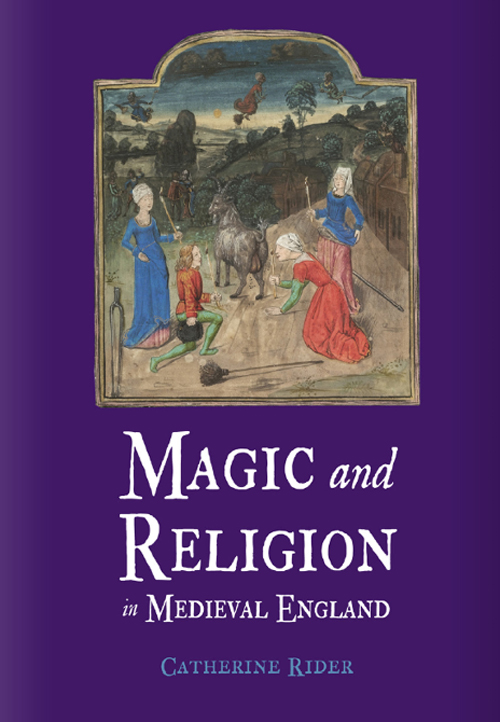Magic and Religion in Medieval England
Review

Catherine Rider, Reaktion Books, 2012, hardback, 219 pp., £20.00 ISBN 9781780230351; Yorkshire Witches, Eileen Rennison, Amberley Publishing, 2012, paperback, 128 pp., £12.99 ISBN 9781445602929
Catherine Rider's study of the relationship between religion and the occult in medieval England complements the trailblazing work of Keith Thomas on the early modern era in his classic study Religion and the Decline of Magic published over four decades ago. She utilises previously unpublished evidence relating both to the widespread use of magical practices and the clergy's response to enquire how educated churchmen faced with ‘a wide range of popular religious and pseudo-religious practices, decided which were to be approved and which condemned and how such decisions were disseminated from ecclesiastical courts and diocesan libraries into the villages and farms of a scattered and only partially literate populace'. Her book focuses on changing ecclesiastical attitudes to folk magic from the reign of King John in the early thirteenth century to the reign of Henry VIII and the dissolution of the monasteries, providing an original and readable survey of clerical and lay responses to a range of unofficial religious practices, including the use of spells and charms recited to cure illnesses invoking Jesus Christ and the saints; the theft of consecrated Eucharistic elements for use in love spells and formal accusations of trafficking with fairies as in the case of Agnes Hancock who appeared before John Stafford, Bishop of Bath and Wells in August 1438, ‘publicly defamed of the crime of magic'. She concludes that despite the relatively small number of such cases it appears that ‘for many people in medieval England the universe was populated by mysterious beings who existed alongside humans' citing a range of historical and literary texts.
Rider's well-illustrated book contains as its frontispiece and back cover an illustration from The Famous History of the Lancashire Witches c. 1780, who have been the focus of renewed interest in the recent quatro-centennial anniversary of their trial of 1612. Eileen Rennison, a North Yorkshire local historian, in this survey of witchcraft across the Pennines reveals ‘how superstition and prejudice played an important and powerful part in the lives of the people of Yorkshire from the Middle Ages right through to the nineteenth century'. Her book refers her readers to the research of the distinguished scholar, Professor J.A. Sharpe of the University of York, amongst a cluster of distinctly less authoritative texts, to put into context a series of brief biographical profiles which she offers of those accused during this period of witchcraft, including the infamous Mary Bateman, whose skeleton following her dissection by surgeons remains on view at the Thackrah Medical Museum in Leeds.

